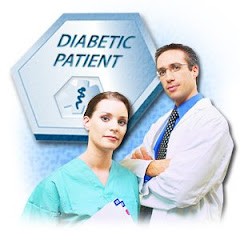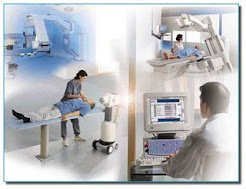 The common cyst (sac containing fluid) with the small size often occurs normally both on the ovaries. In general, the cyst does not disrupt and will disappear by itself. But on the other cases, cyst can cause a problem and needs to treated.
The common cyst (sac containing fluid) with the small size often occurs normally both on the ovaries. In general, the cyst does not disrupt and will disappear by itself. But on the other cases, cyst can cause a problem and needs to treated.A woman has two ovaries. The function is to release ovum / egg cells and to produce hormones. One of the normal ovary producing egg cells each month. This egg cell is in a pouch called the folikel, grow inside the ovary.
In the day-5 of monthly female cycle, estrogen hormones stimulate layer in the uterus (endometrium) to grow and become thick, the preparation will be the possibility of pregnancy. Approximately, after 14 days, the egg cell will be removed / released from the ovary, the process is called ovulation.
Egg cells produced will be moving towards egg channels (the fallopian tubes), which will then be fertilized by sperm, this process is called conception. After the empty ovarian follicle become corpus luteum, which still survive until the next period of menses. Corpus luteum function in order to prepare the endometrium to be ready to accept the cells as the result of the conception.
Ovarian cyst quite often experienced by women at the age of reproduction. Cyst can vary in size and there are many different types of ovarian cyst. Most of the cyst is benign and not causing cancer, while some other can be a malignant cyst which can causing cancer, so that all forms of cyst symptoms need to be checked to a doctor.
Functional cysts
This type of ovarian cyst is the most widely found. The origin is from the egg cells and corpus luteum. So that is known two types of cysts, follicular cyst and corpus luteum cyst. This two types of cyst usually does not cause symptoms and will disappears within 6 to 8 months.
However, it can grow to almost 4 inches and may bleed or twist the ovary and cause pain. Clomid or Serophene, which are drugs used to induce ovulation, can raise the risk of developing this type of cyst. These cysts are almost never associated with cancer.
Dermoid cysts
This type of cyst containing various types of the body such as skin, nails, hair, teeth, and fat. Dermoid cyst can be found on both of the ovaries. Dermoid cyst is usually small and do not cause symptoms, unless if it is grows up. These cysts can become large and cause pain.
Cystadenoma
These cysts develop from cells on the outer surface of the ovary. They are often filled with a watery fluid or thick, sticky gel. They are usually benign, can grow into very large and can cause pain.
Hemorrhagic cyst
Hemorrhagic cyst is also called a blood cyst, hematocele, and hematocyst. It occurs when a very small blood vessel in the wall of the cyst breaks, and the blood enters the cyst. Giving pain on the one side of the lower part of the stomach. Occasionally hemorrhagic cysts can rupture, with blood entering the abdominal cavity. No blood is seen out of the vagina. Even if a hemorrhagic cyst ruptures, in many cases it resolves without surgery.
Endometrioid cyst / Endometrioma
An endometrioma, endometrioid cyst, endometrial cyst, or chocolate cyst is caused by endometriosis, and formed when a tiny patch of endometrial tissue (the mucous membrane that makes up the inner layer of the uterine wall) bleeds, sloughs off, becomes transplanted, and grows and enlarges inside the ovaries.
 Symptoms of Ovarian Cysts:
Symptoms of Ovarian Cysts:Small-size Ovarian cyst usually does not cause symptoms, however when symptoms are present, ovarian cysts may cause a dull ache or a sense of fullness or pressure in the abdomen. Pain during intercourse and at other times can also indicate the presence of ovarian cysts.
Pain or pressure is caused by a number of factors such as size, bleeding or bursting of a cyst which irritates the abdominal tissues, or torsion (twisting of a cyst) which can block the flow of blood to the cyst.
Other symptoms of ovarian cysts which might occur include delayed, irregular, or unusually painful periods. If you experience distention of your abdomen or any other symptoms, notify your clinician immediately.
Following are symptoms that may be present:
* Dull aching, or severe, sudden, and sharp pain or discomfort in the lower abdomen (one or both sides), pelvis, vagina, lower back, or thighs; pain may be constant or intermittent -- this is the most common symptom
* Fullness, heaviness, pressure, swelling, or bloating in the abdomen
* Breast tenderness
* Pain during or shortly after beginning or end of menstrual period.
* Irregular periods, or abnormal uterine bleeding or spotting
* Change in frequency or ease of urination (such as inability to fully empty the bladder), or difficulty with bowel movements due to pressure on adjacent pelvic anatomy
* Weight gain
* Nausea or vomiting
* Fatigue
* Infertility
* Increased level of hair growth
* Increased facial hair or body hair
* Headaches
* Strange pains in ribs, which feel muscular
* Bloating
* Strange nodules that feel like bruises under the layer of skin
Because ovarian cysts may not cause symptoms, they are usually found during a routine pelvic examination. During this examination, a physician may be able to feel the swelling of the cyst on an ovary.
Once a cyst is found, ultrasonography is indicated to visualize the shape of the cyst, its size and location, and whether it is fluid-filled, solid, or mixed. A pregnancy test is also indicated. Hormone levels (such as luteinizing hormone, follicle-stimulating hormone, estradiol, and testosterone) may also be assessed.
To determine whether a cyst might be cancerous, CA-125 levels should be measured. The amount of this protein is higher if a woman has ovarian cancer. However, some ovarian cancers do not produce enough CA-125 to be detected by the test. In addition, other noncancerous diseases such as uterine fibroids and endometriosis can increase the levels of CA-125.
These noncancerous causes of increased CA-125 are more common in women younger than 35 years of age, whereas ovarian cancer is very uncommon in this age group. For this reason, the CA-125 test is recommended mostly for women over the age of 35 years, who are at high risk for the disease and have a cyst that is partially solid.

 Read Via RSS Feed
Read Via RSS Feed




